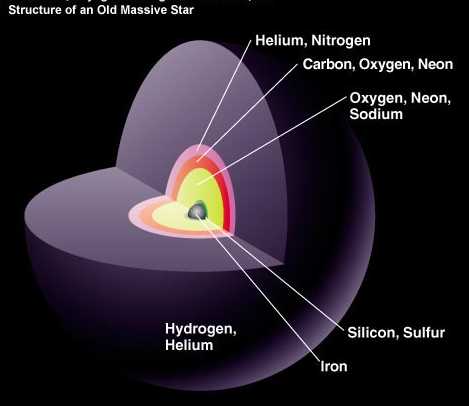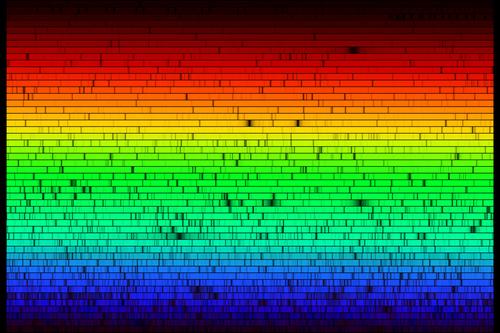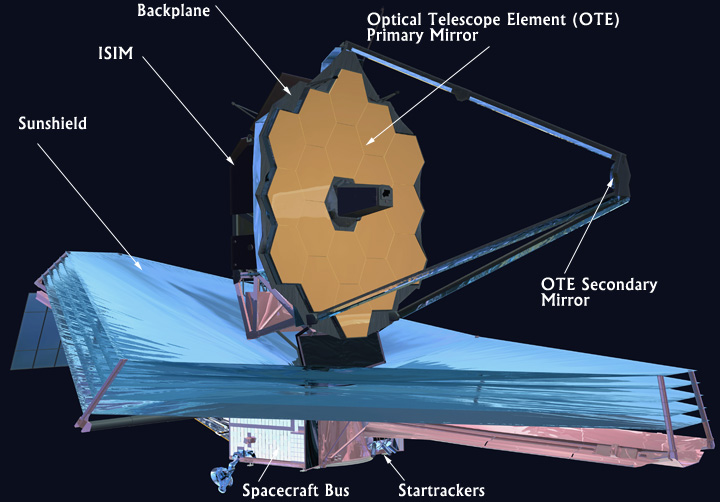Universe and heavy metal

We are credited with the birth of something like a heavy metal. If so, then we urgently need an abortion.
- Ginger Baker, founder of the British rock band Cream
Look around you. Look around carefully. On everything that surrounds you - stones, trees, mountains, sky, clouds, the Sun, water, all living things.
What does it all consist of?
')

At the fundamental level, everything that you know, everything that is on Earth, consists of atoms. Hydrogen, carbon, nitrogen, calcium, iron, gold, etc. All elements of the universe are combined in many different ways to obtain everything that we can observe in the universe. And if we look into the essence of objects, we will see the very thing that gives each atom its special properties.

And, surprisingly, it will be just the number of protons in the nucleus of an atom. And all the diversity of things existing in our world can exist only because there are an abundance of various elements in the world, from hydrogen to uranium and beyond.

But all these elements did not always exist. And, of course, they were not always as many as they are today. For example, a few minutes after the Big Bang, the Universe cooled enough for all the nuclear reactions that could have occurred under the existing conditions. And we can tell what elements were in that moment in the Universe.

Oddly enough, but the Universe (by mass) consists of 76% hydrogen, 24% helium, and no more than 0.0000001% of all other elements combined. The universe cooled down without problems and gave rise to neutral atoms, but since only hydrogen with helium and a negligible number of other atoms appeared in it, it only remains to be surprised to see what we have today.

Where did all this come from? All the elements available today have appeared, and still appear in one way: in the stars.

Our sun, like most stars, in the course of nuclear fusion turns hydrogen into helium, and this is what feeds our star. But the heaviest, massive stars burn their fuel much faster. And when they burn all the hydrogen, they convert the resulting helium into carbon, and then into nitrogen, oxygen, neon and sodium, and then into silicon and sulfur, and then into iron, nickel, cobalt and copper.

Stars, the mass of which exceeds the solar minimum of eight, or even hundreds of times, reach this stage. Our sun will need about ten billion years to burn all its fuel. And the more massive stars burn from tens of millions to only tens of thousands of years until they run out of fuel in the core! And the next stage is quite spectacular.
The star turns into a supernova, and the energy emitted by it is enough to create all the elements of the Universe, and in large quantities.
The video shows how these elements scatter and fall into the Universe. From the point of view of pure hydrogen and helium, it can be said that they "pollute" the Universe. But if you like the abundance of all these heavy metals and other elements in the universe, you can say that they enrich it.
In some regions rich in stars of large masses in the past — especially where many generations of stars have changed — you can find a huge amount of metals. It is this picture that is observed in the area of space where the Sun is located. After all, there is a huge number of spectral absorption lines in it, which uniquely determine the presence of heavy elements!

Unlike the "pure" universe, our region of space is enriched, and about 2% of all the elements in it turn out to be heavier than hydrogen or helium. Our Sun was preceded by at least two generations of stars that were formed, burned their fuel, died and enriched their region of space. But our region can not be called one of the richest regions of the universe, or even our galaxy.
And where can we look for such regions?

A huge number of elements heavier than helium, which cosmologists call metals , are located in the centers of the most massive galaxies - the brightest, most active and cruel regions known in the Universe.
Galaxies began to form stars only 50-100 million years after the Big Bang, and in the most massive, rich galaxies, before their light reaches us, not one or two, but many generations of stars can change.
Therefore, when I see news like this :
Scientists were surprised to discover that carbon existed in the universe much earlier than previously thought.
I am extremely amazed. Because if they don’t mean the “earlier” year of 1920, we don’t think so!

This is TN J0924-2201 , the furthest of the open radio galaxies (with redshift z = 5.19. The greater the redshift number, the younger the Universe was, and the farther the object was from us). About her scientific work was written. But is it any wonder that so many heavy metals are found in this galaxy? We cite the article :
In the range of 2.0 <z <4.5, no evolution of metallicity is observed. Using near-infrared spectroscopy, Jiang and colleagues (2007) did not find a pronounced evolution of metallicity down to z ∼ 6. Recently Juarez and colleagues (2009) found that metallicity is very high even in quasars with z ∼ 6. These results show that the main epoch of chemical evolution in active galactic nuclei is at z> 6.
Let the headlines do not deceive you: it is well known that the Universe was rich in metals and seriously evolved a few hundred million years after the Big Bang, that is, when its age was only 5% of the current one! For example, let's pay attention to this “baby” galaxy:
scienceblogs.com/startswithabang/files/2011/11/spitzer_hubble_big_baby_galaxy_2.jpeg
This galaxy is only 700 million years old, its redshift is such that the light coming from it — most of which were blue or ultraviolet — has already shifted from the visible part of the spectrum! And yet this galaxy is not only 8 times larger in mass than the Milky Way, but even richer with heavier elements than our Sun!
And yet we know that at some point in the past, the very first of the formed stars consisted only of hydrogen and helium. Where was it? It remains only to look further into the past.

So far this is the most distant galaxy known to us: UDFj-39546284 . It existed when the universe was only 480 million years old, that is, 3.5% of its present age!
In this galaxy there are a small number of hot blue stars, and its mass is less than 1% of the mass of the Milky Way! Were there the first stars? Is this galaxy typical for those existing then, in the early stages of the life of the Universe?
According to our best theories, we would not be surprised if such early galaxies were rich in metals, and - in many cases - their masses were comparable to the mass of the Milky Way. But at some point some of the distant galaxies will be the very first. And we want to know where it was and when. And now, only one plan is being developed to clarify this circumstance.

And this is just one of the reasons why we need a space telescope for them. James Webb!
In the meantime, we have not launched it, do not be surprised that the distant parts of the universe consist of heavy metals, evolved stars and massive galaxies. The Universe is a place where everything that we know happens very quickly. One can only guess how many years ago, under suitable conditions, planets and even life could have formed!
Source: https://habr.com/ru/post/402679/
All Articles